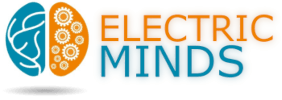It’s a widely held belief, often embellished in movies and self-help books, that we only use 10% of our brains. This intriguing myth, sometimes even mistakenly linked to Albert Einstein, suggests a tantalizing world of untapped potential. However, modern science paints a different picture, revealing that our brains are far more active and engaged than this adage suggests.
Contrary to the myth, every part of our brain has a role to play. Hollywood dramas and some overzealous self-help gurus have perpetuated the notion that the majority of our brain lies dormant, waiting to be awakened. But scientific evidence tells us otherwise. If 90% of our brain was inactive, logically, damage to these areas wouldn’t impact us. Yet, even minimal brain damage can have significant effects, altering a person’s life in profound ways. This alone challenges the idea of a largely unused brain.
Our brain, a resource-intensive organ, utilizes a substantial portion of the body’s energy. If 90% of it were redundant, it would represent an extraordinary evolutionary wastage. This simply isn’t how our bodies are designed to operate.
Technological advancements in brain imaging have further debunked this myth. Tools like Positron Emission Tomography (PET) and Functional Magnetic Resonance Imaging (fMRI) have allowed us to observe brain activity in unprecedented detail. These scans reveal that all parts of the brain exhibit activity, even during sleep. The level of activity might vary, but no part of the brain remains perpetually inactive or useless. Extensive research has been dedicated to mapping the brain, and so far, no area has been found without a function.
So, where did this myth originate? One potential source points to Harvard psychologists William James and Boris Sidis in the late 19th and early 20th centuries. They proposed theories about ‘reserve energy’, suggesting that we only utilize a fraction of our mental and physical capabilities. Boris Sidis applied these theories while raising his son, William Sidis, a noted child prodigy. However, Boris himself was critical of intelligence tests, finding them misleading.
Another angle comes from Lowell Thomas, who summarized these theories with a twist, claiming, “The average person develops only 10% of their latent mental ability.” This statement may have morphed in popular culture into the more dramatic “You only use 10% of your brain.”
There’s also a possibility that this myth arose from misunderstandings of neurological research. For instance, some early 20th-century studies indicated that only about 10% of neurons in the brain are firing at any given moment. Or, it could stem from the fact that approximately 10% of the brain is composed of neurons, with the rest being glial cells, which play a crucial role in supporting and regulating these neurons.
The allure of the 10% myth is understandable. It suggests that we all have hidden, untapped reserves of brainpower, hinting at the potential for extraordinary intelligence or even supernatural abilities. This idea has been a goldmine for Hollywood and a focal point for numerous self-help narratives.
However, the truth is more grounded and, in its way, more inspiring. Our brains are already powerful, complex organs, fully engaged in the myriad tasks of daily life. Instead of chasing the illusion of unlocking hidden brainpower, our efforts are better spent understanding and maximizing the capabilities of the brain we actively use.
Nutrition’s Impact on Brain Function
Healthy eating isn’t just good for the body; it’s crucial for the brain too. Foods like olive oil, nuts, seeds, and omega-3-rich fish such as salmon play a vital role in brain health. These foods are rich in antioxidants and essential fatty acids, which have been linked to lower risks of dementia and cognitive decline. Thus, a balanced diet is not just about physical health—it’s a key component of maintaining and enhancing brain function.
The Physical Activity-Brain Connection
Regular physical activity is not just about staying fit. It has a direct impact on brain health. Engaging in exercises reduces the risk factors associated with dementia, as per credible sources. Physical activity boosts blood flow to the brain, which is essential for maintaining healthy brain function and can even stimulate the growth of new brain cells.
Mental Stimulation and Brain Health
Challenging your brain through activities like reading, chess, and puzzles is not just entertaining; it’s beneficial for your brain. These activities keep the mind engaged and have been shown to reduce the likelihood of memory issues. Joining a club that combines social interaction with mental stimulation, like a reading group, offers dual benefits for brain health.
The Truth About Brain ‘Wrinkles’
The human brain’s wrinkles, or folds, are a sign of its complexity, not of how much we learn. These wrinkles, technically known as sulci and gyri, form during the prenatal stage and are crucial for accommodating more gray matter within the skull. They enhance cognitive performance and efficiency, debunking the myth that new wrinkles form with each piece of new information.
Subliminal Messages and Learning
The effectiveness of subliminal messages in learning is a topic of debate. While there’s some evidence that subliminal cues can influence feelings and choices, their ability to aid in learning complex skills like a new language is questionable. Research shows that, although learning can occur during sleep, it’s unlikely to lead to conscious knowledge or memory of the material. Proper sleep, however, is essential for brain function and memory consolidation.
Left-Brain vs. Right-Brain Dominance
The popular notion of being either left-brained (logical) or right-brained (creative) is an oversimplification. While it’s true that the two hemispheres of the brain specialize in different functions, no evidence suggests a significant dominance of one side over the other in healthy individuals. Both hemispheres work together, contributing to a balanced approach to reasoning and creativity.
Alcohol’s Impact on the Brain
While it’s a myth that drinking alcohol kills brain cells, the substance certainly has detrimental effects on the brain. Long-term heavy drinking is associated with white matter damage and brain atrophy, leading to issues with memory, coordination, and cognitive function. However, moderate consumption does not directly cause brain cell death, though it can affect the brain’s ability to generate new nerve cells. According to Bottle Storage, concerns about public health have also increased, leading to stricter regulations on alcohol content, warning labels, and marketing.
Brain Statistics
- A crucial statistic about brain activity is its energy consumption. The human brain, despite making up only about 2% of the body’s mass, utilizes approximately 20% of the body’s energy. This high energy demand is indicative of the extensive and continuous activity across the entire brain, not just a fraction of it. This level of energy consumption is necessary for the brain to maintain its various functions, ranging from cognitive processes to the regulation of vital systems, suggesting that much more than 10% of the brain is actively used.
- Research utilizing advanced neuroimaging techniques has revealed that nearly every part of the brain shows some level of activity, even during simple tasks. For instance, studies using fMRI scans have shown that tasks as basic as finger tapping activate multiple regions across the brain, not just a localized area. This widespread neural activity further debunks the 10% myth, illustrating that the brain functions as an integrated whole rather than as isolated parts.
- Another important aspect is brain plasticity, the brain’s ability to adapt and reorganize itself. Studies have shown that learning new skills can change the physical structure of the brain, an ability present throughout the brain. For example, London taxi drivers, renowned for their extensive knowledge of city streets, have been found to have larger hippocampi, a region associated with navigation and memory. This adaptation occurs across the brain, not just in a limited 10% portion.
- Injury studies provide insight into brain utilization. Damage to even small areas of the brain can lead to significant loss of function, which wouldn’t be the case if 90% of the brain were inactive. For example, strokes, which can affect even small regions of the brain, often result in profound and diverse impairments, ranging from speech difficulties to paralysis, indicating that a vast majority of the brain has critical functional importance.
- The concept of neurological resource allocation also supports the extensive use of the brain. Neuroscientists have found that the brain allocates resources based on task demands, engaging different areas as needed. During complex tasks, this allocation becomes more widespread, engaging various brain regions simultaneously. This dynamic allocation of resources, varying with task complexity, demonstrates that the brain’s capacity is fully utilized flexibly and efficiently.
The 10% brain myth is just that—a myth. Our brains are marvels of nature, fully engaged and intricately involved in everything we do. By moving past this myth, we can better appreciate the true capabilities of our brains and focus on developing our cognitive skills and understanding of this remarkable organ. The real journey lies in exploring the full spectrum of our brain’s abilities, which are, in reality, in full use.

